Top 10 Most Beautiful Historical Sites in Bahamas
The Bahamas, an archipelago of over 700 islands, runs more than 750 miles southeastward from the southern point of Florida to the island of Hispaniola. The ... read more...Bahamas were a British colony for over two centuries before becoming a fully independent country in 1973. The island country has a long history and was one of the first destinations in the Americas for European explorers. Several Bahamian sites pay homage to the country's illustrious past. Let's use Toplist to locate the most beautiful historical sites in the Bahamas.
-
Christ Church Cathedral, located in downtown Nassau, is the "mother church" of all Anglican churches in the Bahamas and the Turks & Caicos Islands and is one of the most beautiful historical sites in the Bahamas. The existing church edifice, which was built in 1841 and first used for services in 1842, is still in use today. It's made of locally mined limestone stones held together mostly by their size and weight, as well as gravity, rather than cement. The Cathedral is open from 9:00 a.m. to 5:00 p.m. Monday through Friday, as well as for regular church services.
The Lord Proprietors constructed the first church on this site in 1670, making it the first church in the Bahamas. The current edifice, which was completed in 1841, is the fifth church to stand on this site. Nassau became a city and Christ Church became a cathedral in 1861, marking a watershed moment in the islands' history. Tablets line the church's walls, documenting the struggles that Nassau residents faced over 150 years ago. Make a point of looking at the baptismal font on the sanctuary's back row. A little church mouse cut into the wood bears the marks of its British carpenter.
Fun fact: The east-facing stained-glass windows, which show well-known themes from the New Testament, were erected and consecrated in March 1949. They depict Christ's crucifixion, an empty tomb, and ascension. Several graves dating from 1760 may be seen on the grounds around the Cathedral.
Location: 3MG4+X7Q, George St, Nassau, Bahamas
Website: https://christchurchcathedralbahamas.com/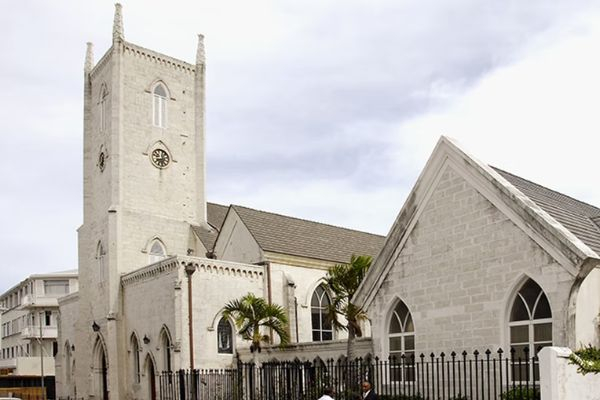
Photo: AFAR Magazine 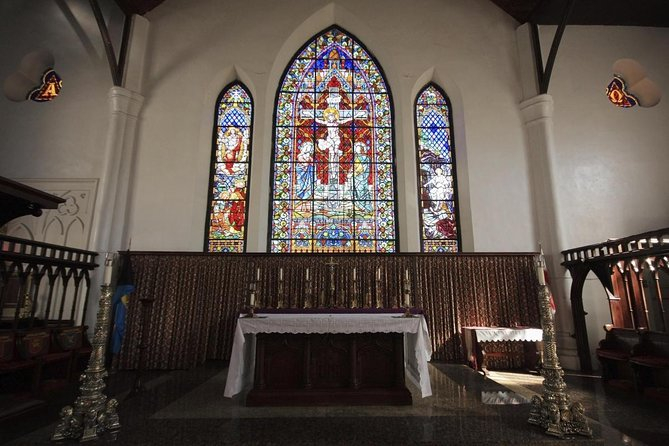
Photo: Viator -
A slave called Pompey led a revolution against slavery in the Bahamas in 1830, which helped to enact the Emancipation Act in 1834. The current Pompey Museum of Slavery and Emancipation was founded in 1992 and is named for this courageous figure. The museum is ironically constructed on the site of a former public market and slave sale lot. Pompey Square is right across the street from the museum. The square is now a vibrant area of downtown Nassau, with lots of dining, shopping, and entertainment options.
Pompey Square, named for the anti-slavery rebel Pompey, is one of the city's busiest squares. The square was conceived in 2008 as a place where visitors may immerse themselves in the Bahamas' cultural, music, and art scenes. The legendary Miss Bahamas Pageant Costume Contest, as well as performances by the Royal Bahamas Police Force Band, are held here. During holidays such as Christmas and New Year's, the place comes alive with some of the best entertainment in the city, such as the Kids' Festival, Caroling, Holiday Lunch Buffet, and much more. Add in the lovely sculptures that adorn the area, and you have the ideal combination to capture the spirit of the Bahamas in a nutshell. Don't miss the many businesses that line this square if you enjoy shopping. The Sweet Festival (which features delectable snacks), the Goombay Festival, and the strategically situated water fountain are all must-sees on a hot summer day.
Fun Fact: Visit Creative Nassau, an open-air bazaar in Pompey Square, on Wednesdays and Fridays from 9:00 a.m. to 5:00 p.m. for original Bahamian crafts and art.
Location: 3MH4+G78, Nassau, Bahamas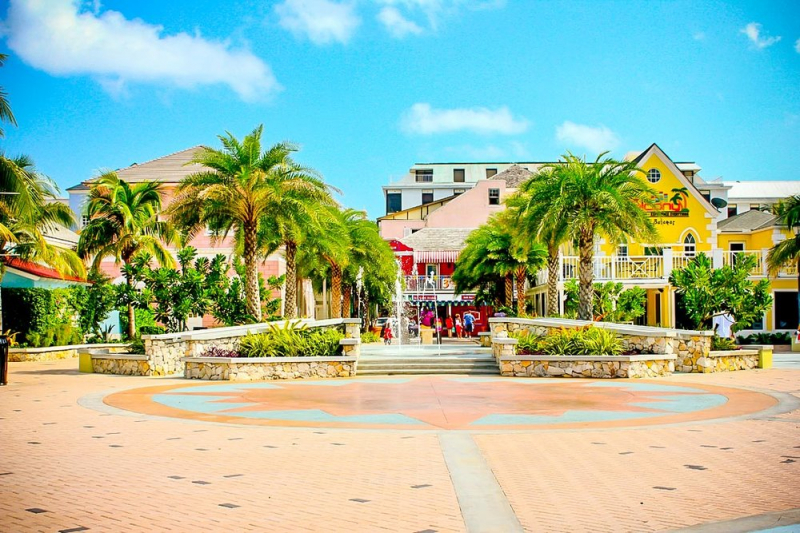
Photo: terraindesignbahamas.com 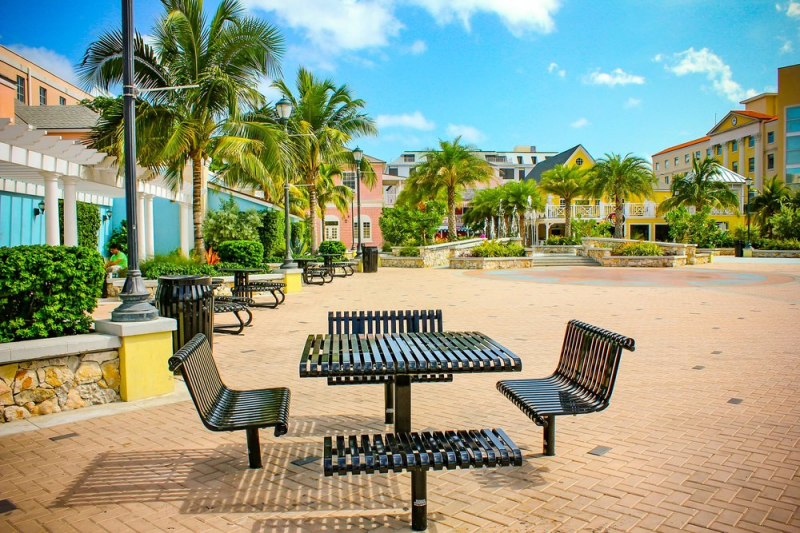
Photo: terraindesignbahamas.com -
San Salvador Island (also known as Watling's Island from 1680 to 1925) is a Bahamas island and district. On October 12, 1492, during Christopher Columbus' first voyage to the New World, it is commonly assumed that this island was the first land he saw and visited. After Christ the Saviour, he called it San Salvador. San Salvador is one of the smallest inhabited islands in the Bahamas, making it one of a kind in the archipelago. Its glistening inland lakes, several historic monuments, kilometers of isolated beaches, and over 50 dive sites keep visitors busy.
Many historians and island residents think that Christopher Columbus first set foot on American soil when he arrived on San Salvador Island in October of 1492. While Cat Island may have the distinction, San Salvador has Landfall Bay, which honors the explorer's visit. Whatever the case may be, history aficionados in San Salvador will be intrigued by the 1887 Dixon Hill Lighthouse and the 1861 offshore shipwreck location of the "HMS Conqueror." For a taste of pre-Columbian history, visit the Pigeon Creek archaeological sites for a look into the lives of the island's early residents, the Lucayan/Taino Amerindians. San Salvador is 200 miles southeast of the Bahamas' capital, Nassau.
Location: San Salvador, Bahamas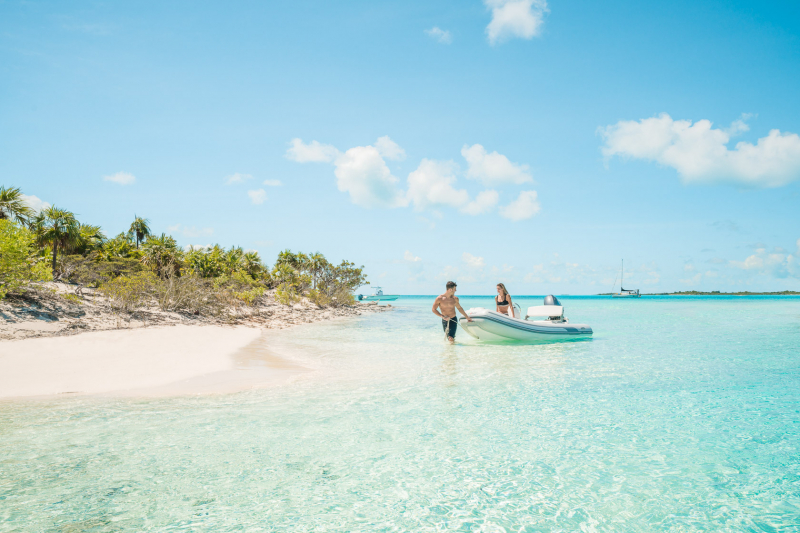
Photo: www.bahamas.com 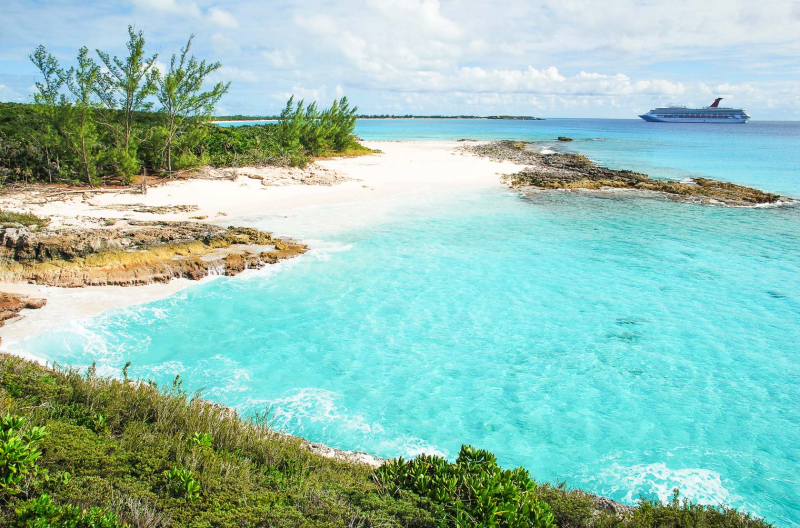
Photo: www.bahamas.com -
The grounds of The Ocean Club, A Four Seasons Resort in the Bahamas are beautiful, but The Cloister has to be one of the most impressive areas on the resort and it is consider as the most beautiful historical sites in the Bahamas! The Cloister, which is located on Ocean Drive and overlooks Nassau Harbour, is the ruins of a French monastery that dates back to the 1300s. It's one of just four stone constructions to have ever been lifted from French land. The Cloister is becoming a popular location for weddings.
The Cloisters are the most magnificent architectural surprise in Nassau. This was part of a 12th-century Augustinian monastery for monks from Montréjeau, a tiny town near the Spanish border in southern France. Newspaper mogul William Randolph Hearst bought this magnificent colonnade in the 1920s. Huntington Hartford bought it in the early 1960s as part of his Paradise Island development. J. J. Castremanne expertly completed the reassembly across from Versailles Gardens, which took two years and was completed in 1968. Silence, a white statue, stands in the center.
Location: The Cloister, Paradise Island Dr, Bahamas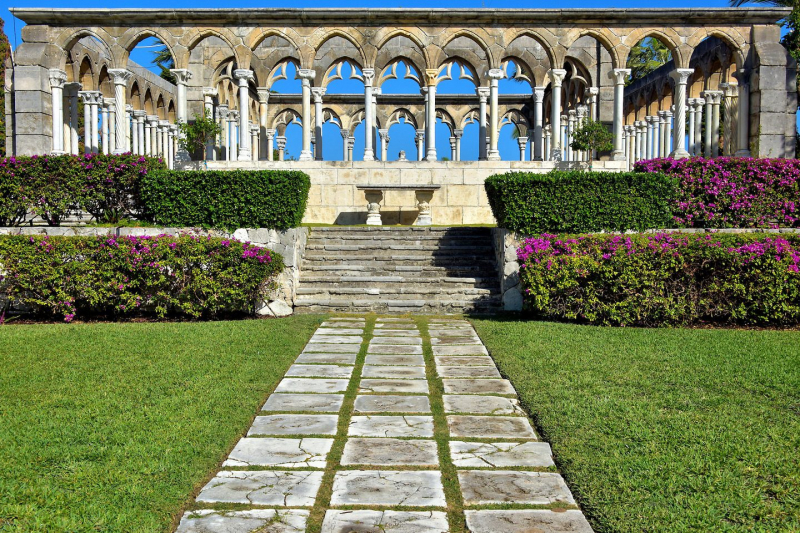
Photo: www.encirclephotos.com 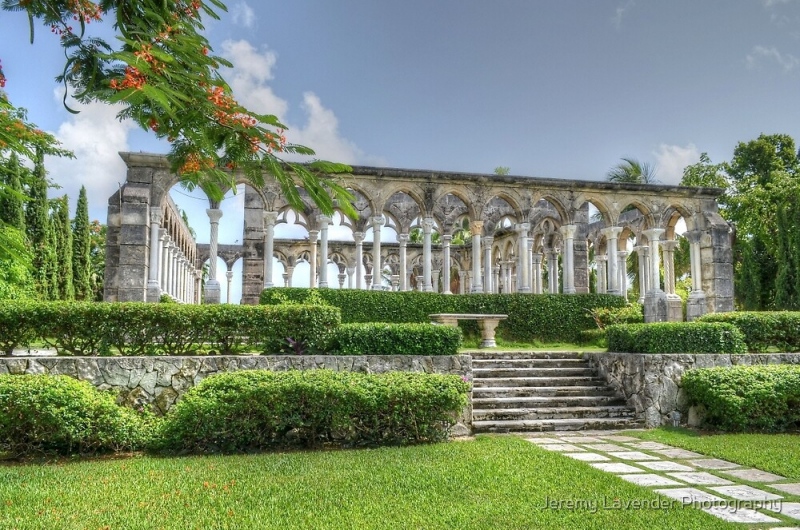
Photo: www.redbubble.com -
The Nassau Public Library and Museum is the largest and oldest of the Bahamas' five libraries. In 1837, the Bahamas Society for the Diffusion of Knowledge merged with a reading society to become the library. With the passage of the Nassau Public Library Act in 1847, the Nassau Public Library became a legal entity. It is one of the Commonwealth Caribbean's oldest public libraries.
The Nassau Public Library is an octagonal-shaped structure that borders Shirley Street at the southern end of Parliament Square. It was built as a jail in 1797 and was the first structure to be built in Parliament Square. It was turned into a library, reading room, and museum in 1879. Books, charts, Arawak items, and a collection of historic prints, colonial records, and newspapers are currently stored in the small prison cells that originally housed inmates.
You don't have to be a bibliophile to enjoy the Nassau Public Library! This octagonal tower, which may be seen at the southern end of Parliament Square, has a fascinating past. It was built in 1797 and initially operated as a prison and a poor workhouse. It was turned into a library with a reading room and a museum about a century later, in the 1870s. It is now open every day except Sunday and is free to visit.
Fun Fact: You might be allowed to visit the eerie dungeon beneath the building if you ask the librarian gently. There's lots of evidence that the structure was formerly a prison even on the higher floors.
Location: 3MG5+JQ5, Shirley St, Nassau, Bahamas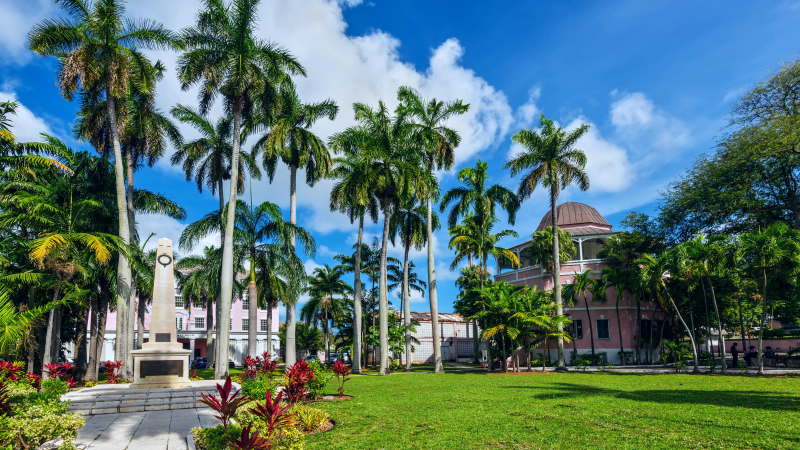
Photo: planetofhotels.com 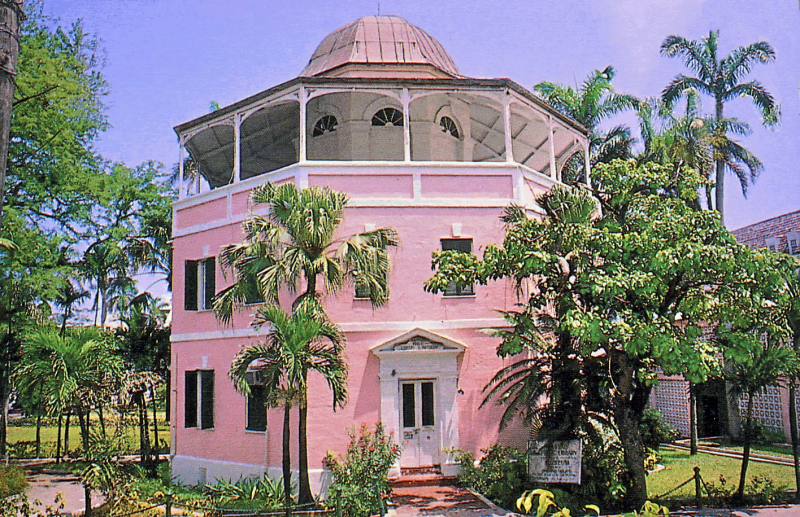
Photo: www.thousandwonders.net -
Cat Island is one of the Bahamas' districts and is located in the middle part of the country. Mount Alvernia, on Cat Island, is the highest peak in the country (formerly known as Como Hill). It reaches a height of 63 meters (207 feet) and is crowned by The Hermitage monastery.
Cat Island, 130 miles southeast of Nassau, disputes San Salvador's claim to be Columbus' first New World landfall. Leaving aside the ongoing inter-island controversy, travelers to Cat Island will discover a wealth of other histories. They may explore the ruins of two late-eighteenth-century island plantations, Armbrister and Deveaux. The Mount Alvernia Hermitage, located near Armbrister Plantation, is a modest stone monastery erected by the reclusive Father Jerome in the early part of the twentieth century. The modest church is perched on Como Hill, the Bahamas' highest point at 206 feet.
Cat Island is one of the Out Islands (locally known as the Family Islands) that make up the eastern limit of the Bahamas and is named for the pirate Arthur Catt rather than the animal. The 48-mile-long island has a population of around 1,700 people and no major resorts, making it a perfect destination to visit if you want to disconnect from the rest of the world (especially the cruise ship throngs that may be found on other prominent Bahamian islands). So pack your beach bag and fly to the Bahamas on the next available aircraft.
Location: Cat Island, Bahamas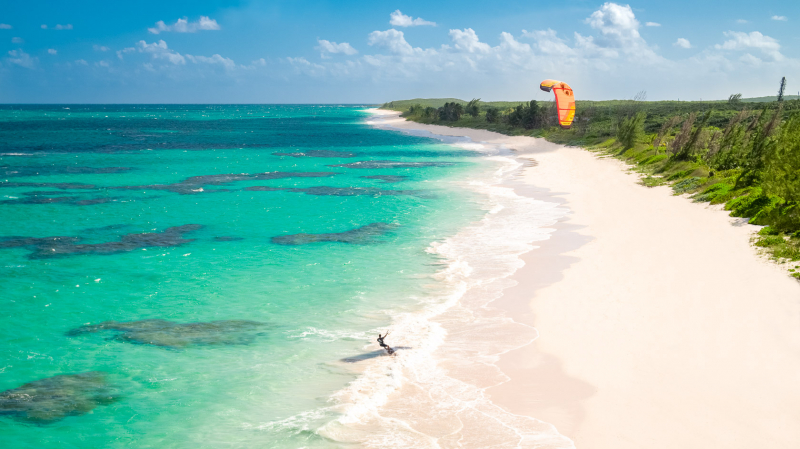
Photo: bahamas.com 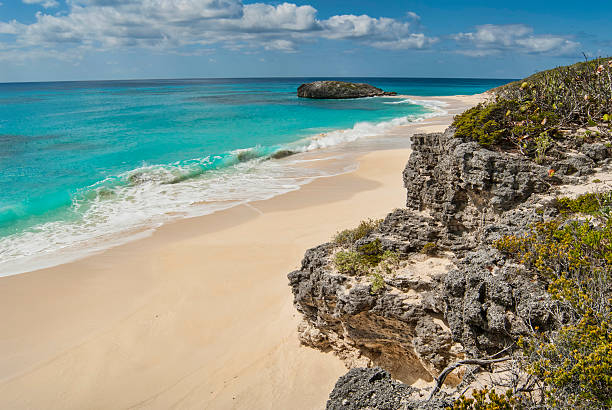
Photo: iStock -
Parliament Square, a major tourist destination in downtown Nassau, was created by Loyalists from North Carolina in the late 1700s and early 1800s. The House of Assembly, the Senate Building, and the Supreme Court of The Bahamas are all pink buildings with Colonial influences, and they are magnificent symbols of the country's history, present, and future.
Parliament Square's pastel-pink buildings have become associated with downtown Nassau. Parliament Square, which was built by British Loyalists in 1815, is a remarkable example of the colonial architecture that was popular in Nassau in the early nineteenth century. The House of Assembly, on the right, is where parliamentary meetings are placed. The Senate meets in the central building, and the Leader of the Opposition's office is on the left. A statue of Queen Victoria stands in front of the Senate building, which was erected in 1905 using public monies.
The Prime Minister and two parliamentary houses—the 38-member House of Assembly (Lower House) and the 16-member Senate (Upper House)—meet at the House of Assembly to address state concerns. If you're interested in politics while the House of Commons is in session, you may visit this pink-colored edifice on the right side of Parliament Square and watch legislators debate from the gallery.
Fun Fact: The Supreme Court is located at the back of the Senate building, where justices and lawyers still wear traditional British robes and magnificent white wigs.
Location: 3MH5+3RR, E Bay St, Nassau, Bahamas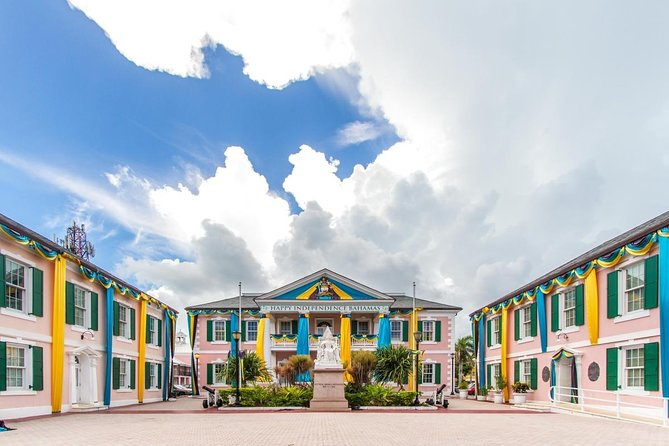
Photo: Viator 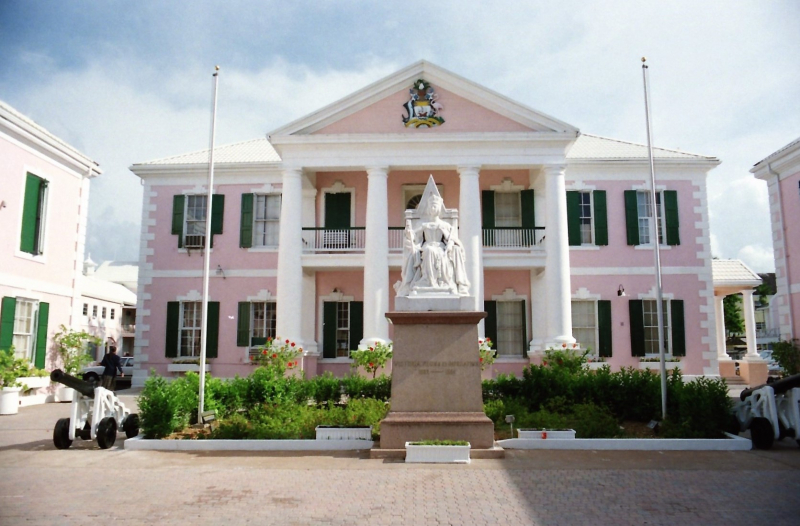
Photo: Wikipedia -
When Governor John Tinker arrived in 1741, he discovered that the island had only one fort (Fort Nassau). He realized that one fort wasn't enough defense, so he had military engineer Peter Henry Bruce build a second fort on the island's eastern end. The fort's construction began in 1741 and was completed in 1742. The fort is formed of limestone and contained 23 cannons and about 95 barrels of gunpowder when it was erected.
Fort Montagu, on New Providence Island, was completed in 1742 and is located immediately east of downtown Nassau. This is considered as one of the most beautiful historical sites in the Bahamas The fort was named after the Duke of Montague by John Tinker, the British governor of the Bahamas colony at the time. The fort, which looks out over Montague Bay and Paradise Island, has its own colorful past. In the first American amphibious attack in history, American naval troops took the fort in March 1776. Spanish soldiers reclaimed the fort six years later, but it was recaptured in 1783 by forces headed by Colonel Andrew Deveaux of the South Carolina Militia.Fun Fact: In 1776, eight US Marine Corps ships arrived at Fort Montagu to seize a huge amount of gunpowder that the British had stockpiled there. The Bahamian militia fled, despite the lack of gunpowder, and the US Marines took Fort Montagu. It was the first successful operation for the US Marine Corps.
Location: Fort Montagu, E Bay St, Bahamas
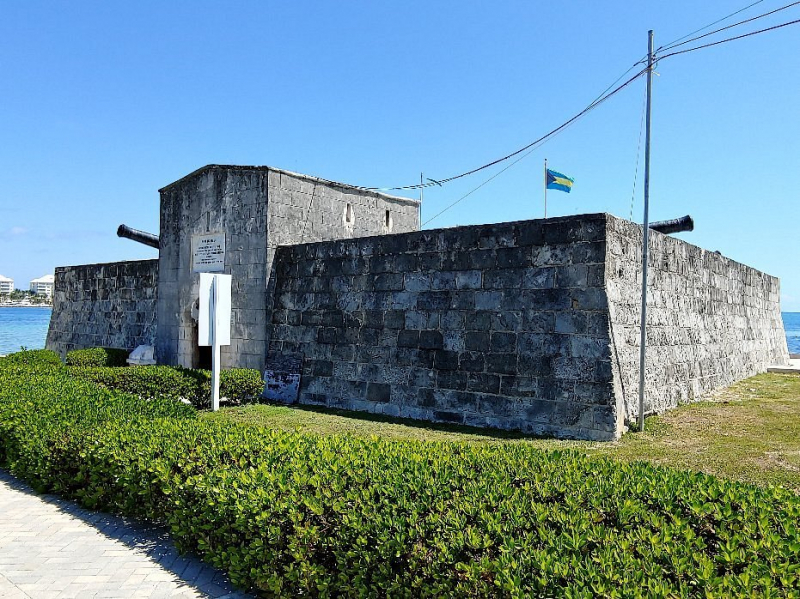
Photo: Tripadvisor 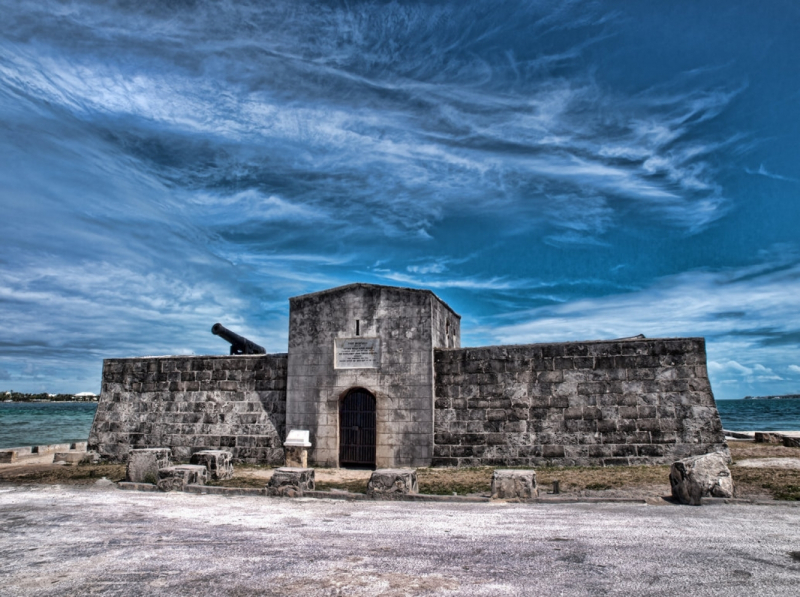
Photo: Plugon -
The Queen's Staircase in Nassau is one of the most popular tourist sites in the Bahamas, dating back to the late 1800s. The stairs were later named after Queen Victoria, Queen of the United Kingdom of Great Britain and Ireland, who abolished slavery in the British Empire in the nineteenth century. By chance, the number of stairs equals the number of years of Victoria's reign. The 65 steps of the staircase, carved from solid limestone, serve as a "testament to the devastating force of slave labor." It took decades for the Queen's Staircase to be given a name. It was named after Queen Victoria's 65-year reign, during which she issued a statement abolishing slavery upon her accession to the throne in 1837.
One of the Bahamas' smallest forts is located in the center of downtown Nassau. To defend Nassau from pirates, Fort Fincastle was erected from cut limestone atop Bennett's Hill. The Queen's Staircase, a 66-step stairway hewn from solid rock by slaves to connect the fort to the city, is one of the most remarkable structures near the fort and historic complex. As you ascend up the stairs to the fort, you'll be rewarded with a spectacular view over the city and the coastline. You'll notice there are only 65 stairs if you count them; this is because the final step is buried beneath the contemporary asphalt pavement at the bottom.
The Queen's Staircase connects the center of downtown Nassau with Fort Fincastle, which was constructed in 1793. The fort, which was shaped like the bow of a ship, acted as a lookout post for pirates as well as a lighthouse.
Location: 3MF6+6WQ, Elisabeth Ave, Nassau, Bahamas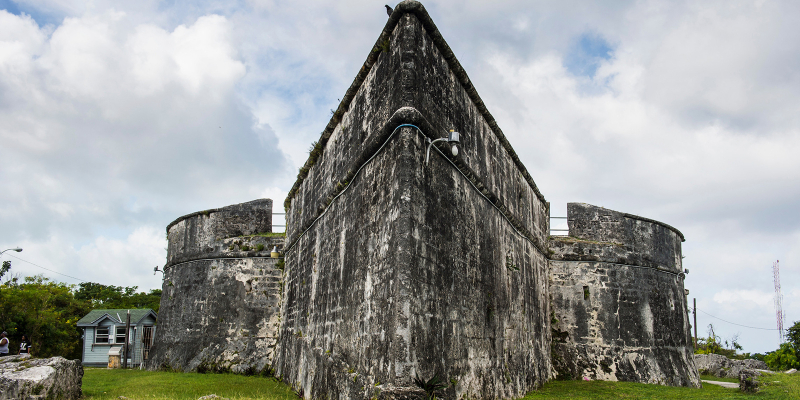
Photo: Afar Magazine 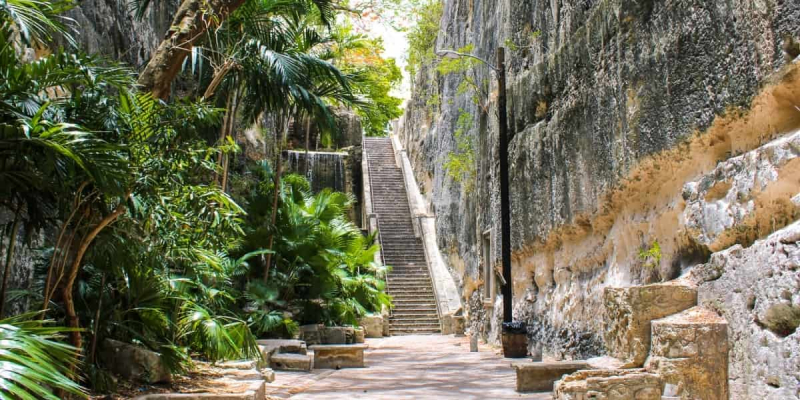
Photo: Should Be Cruising -
Fort Charlotte is a fort erected during the British colonial period on a hill overlooking Nassau's waterfront. After the American Revolutionary War ended, British colonial ruler Lord Dunmore built the fort in the late 18th century. Fort Charlotte, the biggest of the three forts in Nassau, was built in 1789 by Bahamas ruler Lord John Murray Dunmore and named for King George III's wife. There has never been a battle at the fort. It is one of five English forts in Nassau that have survived. These forts were supposed to serve as combat stations against the invading Spaniards.
The fort is a short walk west of downtown Nassau and the cruise ship port, and it has a waterless moat, a drawbridge, walls, and dungeons, making it a great place for families to visit. Guided tours are available during the day. Make sure to take in the breathtaking sights of the island.
Fun Fact: Lord Dunmore's first "pet project" was Fort Charlotte, which was built to guard Nassau Harbour's western entrance. While the fort was large and complex, it was also seen to be badly planned and over budget by experts, earning it the nickname "Dunmore's Folly."
Location: 3JGR+QGC, W Bay St, Nassau, Bahamas
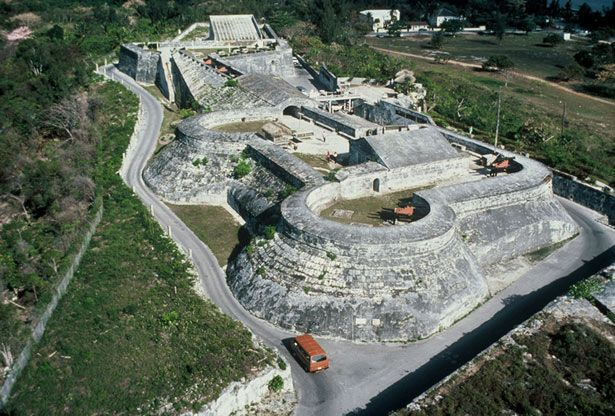
Photo: Pinterest 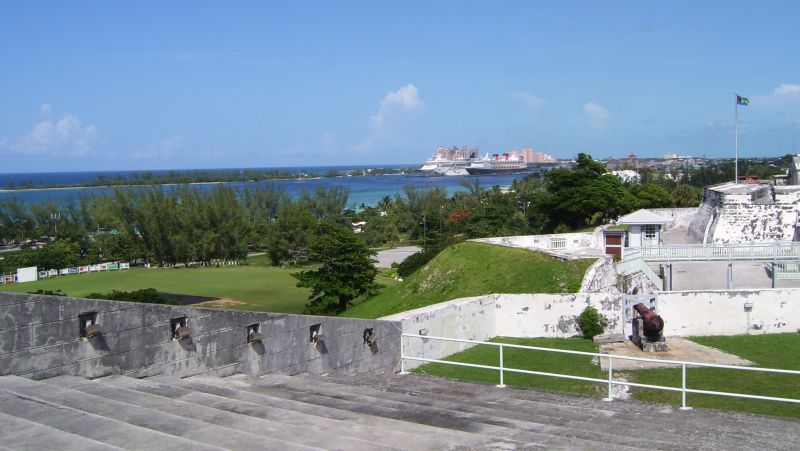
Photo: Thousand Wonders































